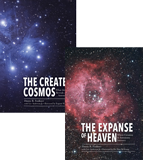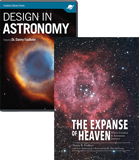Oort Cloud—No Evidence Required
Most evolutionary astronomers talk about the Oort cloud like it’s a fact. Yet they admit no direct observational evidence exists.
When I was growing up, the definition of science was simple: “the study of the natural world using the five senses.” This definition placed some limits upon science. For instance, science was restricted to the study of the natural world, so anything supernatural was out of bounds to science. Supernatural things include miracles, angels, souls, and God. Even if something is part of the natural world, it wasn’t considered scientific unless we could detect it with our five senses.
Over the years, however, many scientists found this definition too confining. So they gradually redefined science as “the search for natural explanations.” This newfangled view of “science” studies things we can’t even detect. The Oort cloud is a good example. It was included among the “11 Scientific Wonders We Know Exist—but We’ve Never Seen” featured in a cover article in New Scientist last year.
What is the Oort cloud? Science textbooks and magazines are filled with impressive illustrations of a huge shell around our solar system where long-period comets come from. (Long-period comets are those comets that generally have orbital periods greater than two centuries—meaning they must travel a great distance to reach our sun.)
Why do so many scientists treat the Oort cloud as fact? If comets formed billions of years ago, then you have a huge problem to solve. Comets are relatively fragile. They consist of a nucleus made primarily of ice. Mixed in with the ice are very fine solid particles of dust. The ice stays frozen while a comet is far from the sun, where it is very cold. But when it comes close to the sun, the heat evaporates some of the ice, dislodging dust particles and forming long tails. While briefly near the sun, comets can become very bright before rapidly fading from view.
But this brief glory comes at a price. Eventually, comets lose so much ice that they can no longer glow brightly. Astronomers estimate that comets likely cannot survive a hundred trips around the sun. To make matters worse, two other mechanisms destroy comets. The gravity of the larger planets, such as Jupiter, can kick them out of the solar system, never to return. Also, comets occasionally collide with planets and disintegrate. Astronomers watched this happen to Comet Shoemaker-Levy 9 in 1994.
If the solar system were only a few hundred million years old (that’s nowhere near the supposed age of the universe), no more comets would remain. But most scientists think the solar system is 4.6 billion years old, so why do we still see comets? To solve this dilemma, in 1950 the Dutch astronomer Jan Oort suggested that many comet nuclei orbit the sun tens of thousands of times farther out than the earth’s orbit. The gravity of a star or other large object passing near the Oort cloud supposedly would cause nuclei to fall inward toward the sun. Thus, new comets would replace older comets that die off.
Many scientific papers are written each year about the Oort cloud, its properties, its origin, its evolution. Yet there is not yet a shred of direct observational evidence for its existence.
Can we see this Oort comet cloud? Hardly. Remember that comet nuclei are very small. When far from the sun, they shine only by reflecting sunlight. But at such great distances, the sun’s light is very dim. Consequently, comet nuclei in the Oort cloud would be too faint for us to see. More than 30 years ago, astronomer Carl Sagan said it well: “Many scientific papers are written each year about the Oort cloud, its properties, its origin, its evolution. Yet there is not yet a shred of direct observational evidence for its existence.”
The situation has not changed since then, despite the constant flow of magazine articles and technical papers. Since there is no detectable evidence for the Oort cloud’s existence, it fails to qualify as a scientific idea by the older definition of science. However, the new definition doesn’t require any hard evidence. Rather, it qualifies as scientific simply because it is a “natural” explanation.
That’s a dangerous drift. The new, looser definition of science appeals to many scientists because it allows them to include many things, such as the Oort cloud, under the respected banner of “science,” contrary to the earlier mindset.
But this new definition has a much more insidious side. It implies that only the natural world is worthy of study and respect. Indeed, many advocates go further and argue that only “natural” phenomena exist, and hence they exclude any possibility that God exists.
How ironic. Something which we have no evidence for—except the imagination of evolutionary scientists who are desperate to defend their unfounded beliefs—is treated as fact because it’s “natural.” Meanwhile, the eternal Being who preceded nature and brought it into existence is not considered a fact because he is not “natural.” Whom should we believe?
Answers Magazine
November–December 2017
Dr. John Whitcomb explains the timeless truths that will help us reach the next generation with God’s message of redemption.
Browse Issue SubscribeRecommended Resources

Answers in Genesis is an apologetics ministry, dedicated to helping Christians defend their faith and proclaim the good news of Jesus Christ.
- Customer Service 800.778.3390
- © 2024 Answers in Genesis






